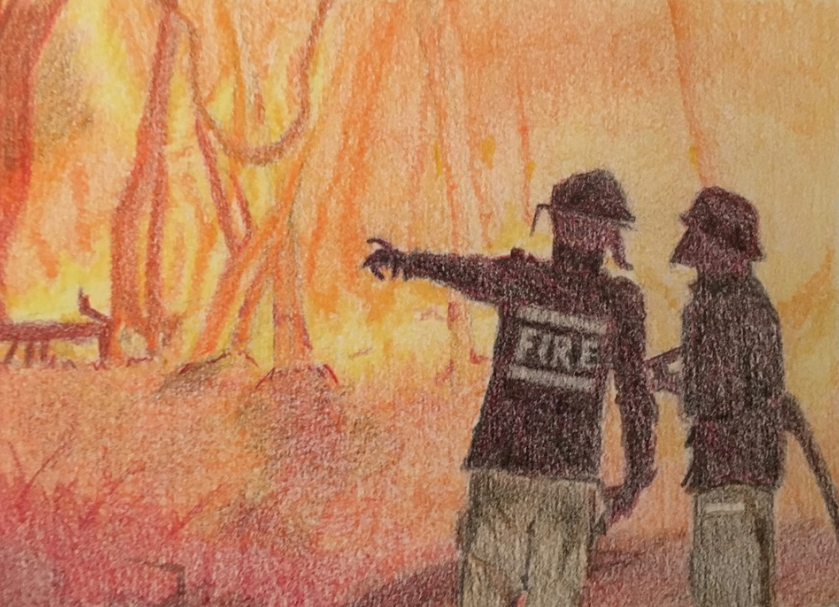Every year, patches of Australian forests are consumed by fire, an ecologically necessary process that releases soil nutrients and stimulates plant growth. When the fire season is exacerbated by drought and high temperature, however, the devastation is so great that some citizens are forced to flee their homes. In the most extreme circumstances, natural habitats are ruined completely, even to the point of species extirpation.
This year, these conditions converged in a perfect storm, ravaging large swaths of the Australian continent in dramatic wildfires. The scale of its current bushfire season is unprecedented: Almost 13,000 square kilometres have burned, taking the lives of 29 people and more than 800 million animals.
Increases in the mean average temperature were a contributing factor to the bushfires’ severity, according to Morgan Crowley, a Ph.D candidate in the Department of Natural Resource Sciences at McGill.
“Bushfires are normal in Australia, but this fire season [is] exceptionally hot and dry […], which is why it is even longer and [more] dangerous,” Crowley said.
Historically, such extreme weather patterns have arisen along with El Niño conditions, but this year is an exception. The El Niño Southern Oscillation is a climate phenomenon resulting in unusually warm water off the Pacific coast of South America, pushing hotter weather to the East. Although no El Niño has occurred this year, temperatures have continued to rise. Combined with the adverse effects of limited rainfall in Australia, these inconsistencies point to greenhouse gas emissions as a likely source for changing weather patterns.
The disturbing relationship between climate change and Australia’s wildfires does not end there. Species struggling to deal with higher temperatures have been hit hardest by the flames. For example, efforts to protect the Kangaroo Island dunnart, a small marsupial, have been crushed by the recent blazes. After years of rebuilding their population, only one has been found alive.
“One of the most devastating impacts of this fire season is […] that it is burning in species-rich areas,” Crowley said. “The fires are threatening many unique species that are not found outside of these areas.”
Species such as the koala are especially threatened by the loss of habitat area. Since koalas are endemic to Australia, meaning they are native to the island continent and not found anywhere else in the world, populations will have a harder time recovering from the fires. Already, koalas have lost 30 per cent of their previous habitat area, taking the lives of more than 25,000 animals.
Still, Australia’s rich biodiversity is thought to make its ecosystems more resilient, and able to bounce back from disturbances. Additionally, many species have evolved adaptations to frequent bushfires, like the eucalyptus plant that encases its seeds in woody capsules to protect them from intense heat.
Yet even species, such as birds and rodents, who previously managed to survive the blazes have found little respite from this year’s massive wildfires. Instead of burning in patches, the fires are all-encompassing, burning through animals’ familiar hiding spots.
The reduction in disaster response funding from the Australian government has stretched resources thin. Both paid and volunteer firefighters all over the country have been putting their lives on the line to protect citizens and wildlife. At the same time, scientists around the world have employed fire visualization technology, such as MyFireWatch, to anticipate the spread of the blaze and its aftermath
“Mapping and analytical tools are already being used by firefighters and scientists to examine the active wildfires,” Crowley said.
Researchers like Crowley are developing technology to map bushfires in real time and get the information to firefighters as quickly as 30 minutes after the fire is detected.
“Eventually, when the Canadian ‘WildfireSat’ satellite is launched in 2024, […] it will hopefully be able to help the firefighters not only in Canada, but maybe eventually around the world,” Crowley said.
Wildfires in California, Western Canada, and Australia in the past year have pushed scientists to become innovators of mapping technology and environmental preservation. The question remains, however, if governments will take appropriate action to reduce emissions, or if they will continue to add fuel to the fire.







